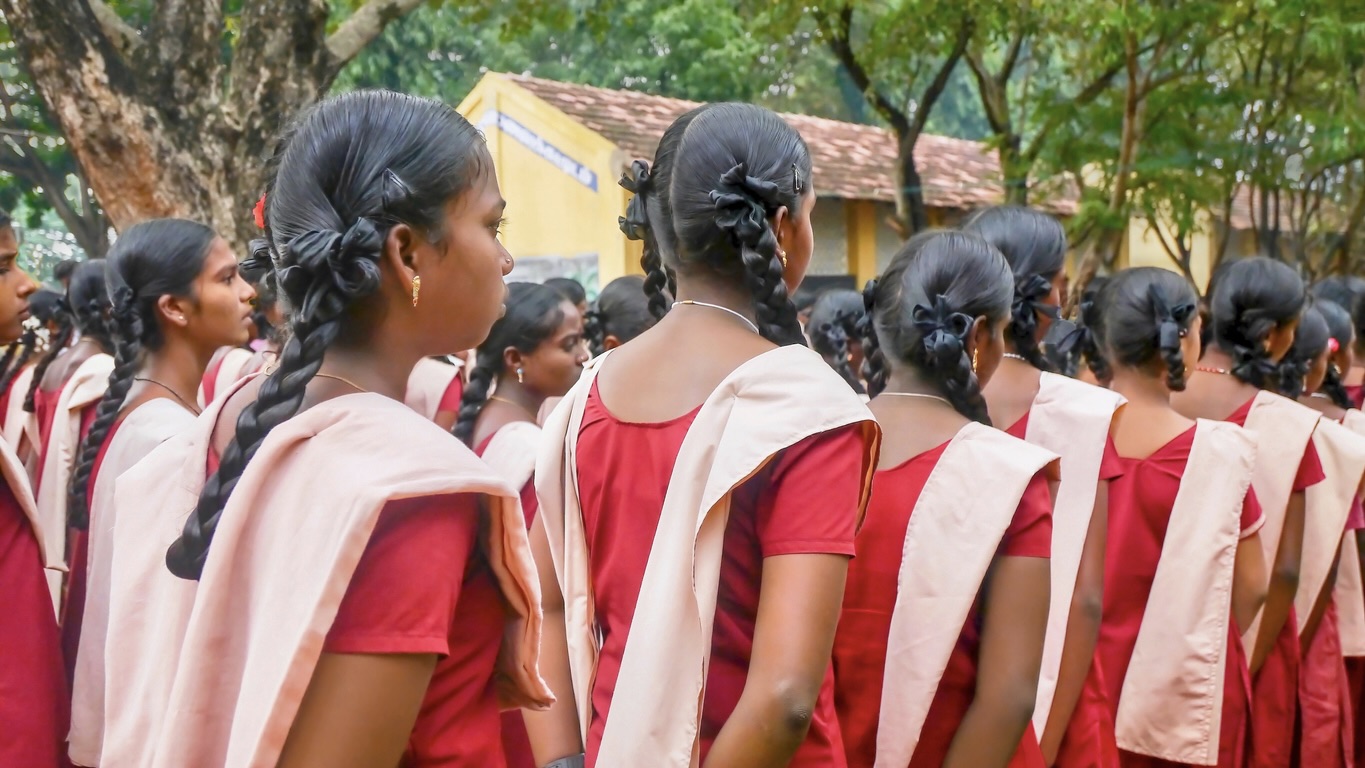The study linked higher humidity to earlier menarche, the first menstrual period, and higher temperatures to a delayed onset. Notably, differences in the timing of menarche by religion, ethnicity, and urban-rural location have narrowed since the early 1990s.
Published Sep 24, 2025 | 7:00 AM ⚊ Updated Sep 24, 2025 | 7:00 AM

The national trend over a 27-year period points to a modest decline in the average age at menarche.
Synopsis: Climate change, education, and changing socio-economic factors have all contributed to girls across ten Indian states reaching puberty earlier than in the past, according to a new study based on nearly three decades of data. Researchers linked increased humidity to earlier menarche—the first menstrual period—while high temperatures were associated with delayed onset. Social factors were also significant, though notably, disparities by religion, ethnicity, and region were found to have narrowed.
Girls in India are reaching puberty earlier than before, with climate, nutrition, and education shaping when menarche—the first menstrual period—occurs, according to a study based on three decades of data.
Researchers observed that climate, education, urbanisation and socioeconomic development all played a role in determining this important stage of adolescent growth.
While the national trend over a 27-year period points to a modest decline, some states recorded an increase. Maharashtra, for instance, saw the average age at menarche rise.
The findings draw on India’s Demographic and Health Surveys (1992–93 and 2019–21) across 10 states—Andhra Pradesh, Assam, Goa, Himachal Pradesh, Karnataka, Kerala, Maharashtra, Rajasthan, Uttar Pradesh, and West Bengal.
While acknowledging the study’s limitations such as “reliance on self-reported data, use of annual rather than seasonal climate averages, and lack of direct biological measures like BMI or hormonal profiles,” the researchers said the aim was to “understand trends in age at menarche and the influence of environmental and demographic factors,” allowing an assessment of how social and climatic changes influence menstruation.
The study linked higher humidity to earlier menarche and higher temperatures to delayed onset, suggesting that climate affects biological development through nutrition, heat stress, and health impacts.
“Climatic changes, particularly increased humidity, along with demographic factors, are important determinants of menarche timing,” the researchers wrote.
Social factors were found to be equally important. The researchers noted that “educational attainment strongly influenced menarche timing: girls with higher education tended to experience menarche earlier, likely due to better nutrition and health awareness.”
Notably, differences in the timing of menarche by religion, ethnicity, and urban-rural location have narrowed since the early 1990s.
These changes, the study said, reflect “improved healthcare access and socioeconomic development,” gradually reducing inequalities in adolescent health.
Dr Dhivya Sharona, Consultant in Obstetrics and Gynaecology at Rela Hospital, Chennai, explained how the region’s hotter temperatures and high humidity affect adolescent development in different ways.
“The effect of high humidity is associated with adolescents getting early menarche, which was usually around 15 to 16 previously, and now in later ages, it is around 10 to 13,” she said.
“Higher temperatures have the opposite effect because heat stress can cause hormonal imbalances and lead to delayed periods.”
The combination of humidity and heat produces complex outcomes that vary across local environments, according to Dr Sharona, but climate is not the only factor.
“The net effect of getting periods doesn’t depend only on humidity and temperature. Nutrition, local exposures, and other environmental factors also play a role,” she added.
“Menarche trends can act as an early biological signal of climate, but they should not be treated in isolation. They need to be combined with other indicators like nutrition, endocrine disruptors, infectious diseases, and pollution to fully understand adolescent development.”
Dr Sharona identified nutrition as one of the strongest determinants of puberty timing.
“Undernutrition delays puberty and menarche, while overweight or obesity can lead to early onset,” she observed.
Climate change, she said, worsens both extremes: agricultural stress and food scarcity contribute to undernutrition, while urban lifestyles increase risks of obesity. In South India’s cities, rising heat, pollution, crowding, and exposure to endocrine disruptors have contributed to early menarche. Lower physical activity in cities adds to the risk of early menarche.
By contrast, rural adolescents face delays in puberty due to persistent food insecurity and limited dietary diversity.
For public health, Dr Sharona called for integrated action.
“Planning should focus on integrated adolescent sexual and reproductive health (ASRH), including school services for early menstrual education, adolescent-friendly health services, and mental health support,” she said.
She also called for climate adaptation strategies in schools: adjusting school hours during heatwaves, providing safe learning spaces, and promoting awareness among parents and adolescents about diet quality, food security, and micronutrient deficiencies.
Such measures, she explained, would not only reduce climate-related health risks but also improve mental health and lower dropout rates among adolescents.
(Edited by Dese Gowda)
